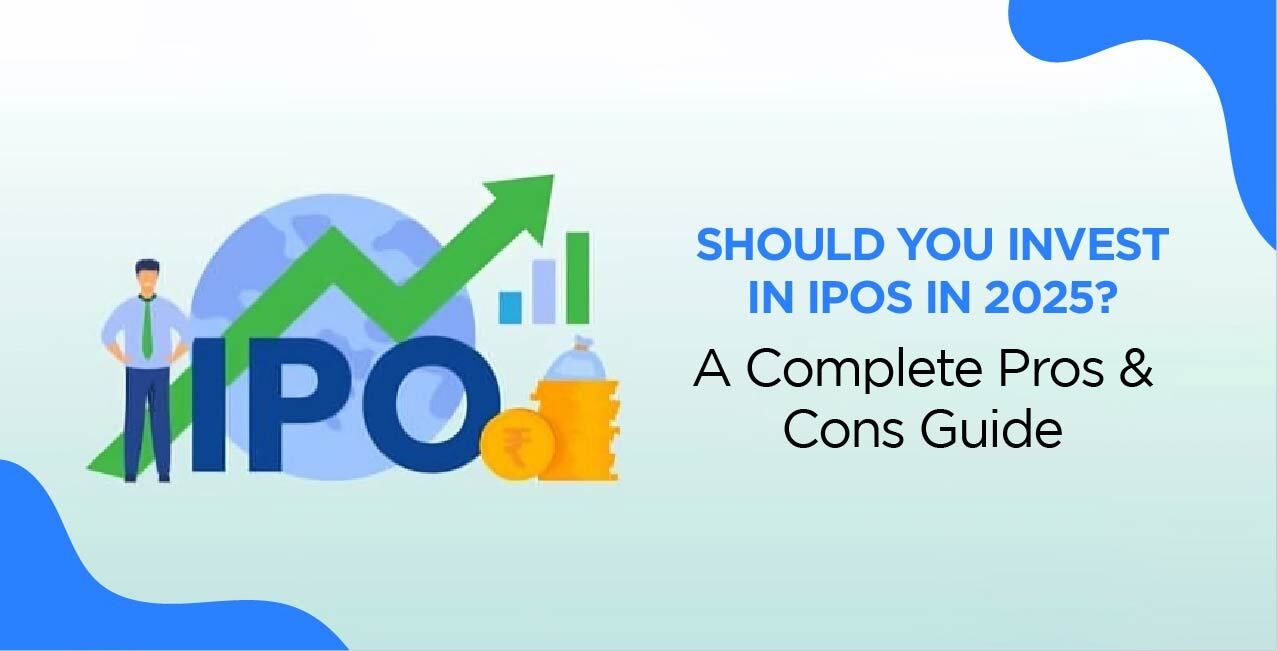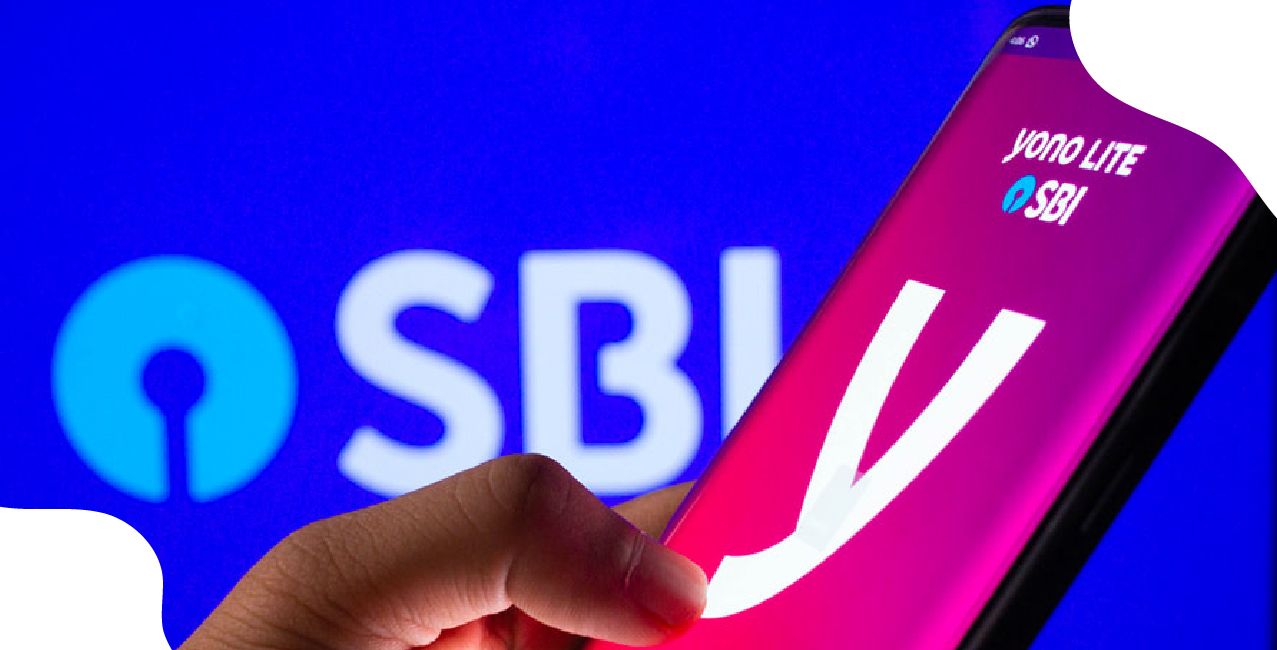
Author
LoansJagat Team
Read Time
8 Min
26 Mar 2025
Should You Invest in IPOs in 2025? A Complete Pros & Cons Guide
Rajni, a 30-year-old marketing specialist from Bangalore, was scrolling her phone while tracking the latest IPO buzz. "Paisa double, bas entry maaro!" her WhatsApp stock group suggested.
That thought excited her. She had watched stocks launch at ₹500 and zoom to ₹1,200 in weeks. But she had also seen some crash faster than a Monday morning mood, wiping out investors’ savings.
But what exactly happens in an IPO? Imagine your favourite street food stall turning into a big restaurant. Earlier, the thelawala owned it alone. Now, he sells shares: maybe 10,000 at ₹100 each to raise ₹10 lakh for expansion. If the restaurant succeeds, its value jumps, and early investors profit.
If not, paisa gaya pani mein!
As 2025 approaches, Rajni faces a dilemma: "Nivesh karu ya ruk jaun?"
Let's find out if IPOs give people real profits or whether confidence markets them, and in a flash, they are gone!
IPO 101: Kya Hai Yeh Naya Investment Funda?
Initial Public Offering (IPO) refers to the process where private companies sell their shares to the public to raise equity capital from the public investors.
Let us understand it through a simple explanation:
- Imagine you have a lemonade stall and want to expand. You sell small parts of your business (shares) to friends to raise money. If your stall grows, their shares become more valuable, and they earn a profit.
- An IPO works the same way! A private company sells shares to the public to raise funds. If the company grows, investors make money; if not, shares lose value.
From Start-Up To Stock Market: IPO Ka Safar
Rajni wanted to build India’s biggest digital advertising startup. She began with investments of ₹5 lakh from her savings. Her business expanded quickly during its first 3 years, as she generated ₹10 crore in annual revenue.
She required ₹200 crore to expand her business across the country. At this point, she chose to go public with her company by listing it through an IPO.
- Company Decision: A company chooses public offerings to raise capital for expanding operations and improving its credibility.
- Rajni and her co-founders recognised that their company required additional funds beyond private funding to achieve expansion. The company decided to acquire ₹200 crore through public share sales.
2. SEBI Approval: The company submits its Draft Red Herring Prospectus (DRHP) to SEBI, containing its financial data and information about risks and future development plans. SEBI reviews and grants approval.
- She hired investment bankers to create a Draft Red Herring Prospectus (DRHP), which included company information about growth potential, financials, and risk assessments. The draft prospectus underwent SEBI's evaluation process, which kept investors adequately informed.
3. Price Band Announcement: During the IPO process, investors determine the company's valuation by examining the established pricing boundaries for its shares.
Read More - How to Apply for IPO in Zerodha
- After valuing the company, they established a share price range from ₹200 to ₹250 so investors could submit their bid offers within this specified band.
4. Book-building process: Investors submit their bids to the price band, which establishes the share demand and final share prices.
- The share bidding process included participation from institutional investors, retail investors, and HNIs. It exceeded initial expectations when it brought in ₹500 crore, which exceeded the target figure of ₹200 crore.
5. Allotment: Share distribution occurs based on market demand, and institutions secure their allotment, followed by retail investors and high-net-worth clients.
- Some investors received fewer shares than requested because the total demand exceeded available shares. The company achieved a successful share offering worth ₹200 crore through selling 80 lakh shares at a price of ₹250 each.
6. Stock Exchange Listing: The company permits public trading on NSE and BSE for its shares. Market performance during the first trading day affects investor sentiment on share value assessment.
- The initial public offering of her company reached ₹300 per share on the first day, which generated an instant 20% profit for early investors. Her company's valuation soared to ₹1,200 crore, after which she maintained a 60% stake in the company, thus becoming a self-made billionaire.
Why Do Companies Go Public? Paisa, Power, Prestige!
Companies in India choose to go public for several reasons:
Reason | Explanation | Example |
Raising Capital for Growth | Companies raise money to expand, enter new markets, or acquire competitors. | A company raises ₹500 crore to open new factories. |
Enhancing Credibility and Brand | Being listed on NSE/BSE boosts trust and credibility among investors and customers | A public company attracts more clients due to its market presence. |
Exit for Early Investors | Venture capitalists (VCs) and angel investors can sell their shares for profit. | A VC who bought shares at ₹100 sells them at ₹500, making a 5x return. |
Attracting Top Talent | Public companies offer ESOPs (Employee Stock Ownership Plans) to retain employees. | Employees buy shares at a lower price and benefit when stock value increases. |
Reducing Debt | Instead of taking loans, companies raise funds from the public, lowering financial risk. | A company with ₹200 crore in debt uses IPO funds to repay liabilities. |
Increasing Founder Liquidity | Founders can sell a portion of their stake while maintaining control. | A founder with a ₹1,000 crore company sells 10% in an IPO and earns ₹100 crore in cash. |
Golden Ticket or Risky Gamble? IPOs Ka Sach!
- Early Investment Advantage: IPO investors acquire shares at a lower price before these stocks become publicly available on the market.
Example:
- An IPO is priced at ₹200, but after listing, it jumps to ₹280, giving early investors a 40% gain.
- An IPO is priced at ₹200, but due to weak demand, it lists at ₹180, resulting in a 10% immediate loss.
2. High Growth Potential: Most Initial Public Offerings come from emerging startups and unicorn businesses focused on rapid expansion.
Example:
- A startup IPO at ₹500 per share grows into a market leader, and its stock rises to ₹1,500 within two years.
- A startup IPO launches at ₹500 per share, but after a year of losses and missed targets, its stock crashes to ₹250.
3. Diversification: Stock portfolio diversity increases through IPO investments, which brings new market sectors along with fresh investment opportunities.
Example:
- An investor holding IT and banking stocks adds an e-commerce IPO for better sector balance.
- An investor adds an e-commerce IPO to balance IT and banking stocks, but the company fails to scale, and the stock drops by 60%.
IPO Red Flags To Watch: Jaldibaazi Ka Kaam Shaitaan Ka!
Red Flag | Why It’s A Risk | Example |
Overvaluation | The stock may struggle post-listing if the IPO price is too high compared to earnings. | A company with ₹10 crore profit but a ₹5,000 crore valuation may be overpriced. |
Weak Financials | High debt, losses, or declining revenue signal instability. | A startup with ₹100 crore in revenue but ₹150 crore in losses may not be sustainable. |
Lock-in Period Expiry | Promoters or early investors selling shares soon after the lock-in period suggests low confidence. | If key investors exit after 6 months, the stock may crash. |
Excessive Hype | Heavy media buzz can inflate demand, but prices may drop after listing. | A hyped IPO lists at ₹500, but weak fundamentals push it down to ₹350. |
Poor Industry Outlook | A struggling sector limits future growth potential. | A telecom startup launching an IPO in a saturated market may face tough competition. |
Want to Apply For An IPO? Read This Before You Regret!
Open a Demat & Trading Account: Required for buying and holding shares.
Choose the IPO: Check upcoming IPOs on NSE/BSE or your broker’s platform.
- Apply via UPI or ASBA
UPI Method: Apply through broker apps (Zerodha, Groww) and approve payment via UPI.
ASBA Method: Apply via net banking; the bank blocks the amount until allotment.
4. IPO Allotment: Shares are credited to your Demat account, or the amount is refunded if not allotted.
5. Listing & Trading: Shares start trading on NSE/BSE, and you can sell or hold.
Avoid These Pitfalls
- Skipping Research: Avoid making investments based solely on hype. It is essential to assess a company's financial health, valuation metrics, and overall industry trends before deciding.
- Rajni once rushed into an IPO simply because it was popular at the moment. After its debut, the stock dropped by 30%, teaching her the importance of scrutinising a company’s financials and growth prospects before investing.
2. Overpaying for Overhyped IPOs: Investing in stocks with excessively high valuations can lead to significant losses after they start trading publicly. Always compare these companies with their industry counterparts before making investment decisions.
- Rajni opted out of an IPO that had a share price of ₹500 and a P/E ratio of 50, recognising it as overpriced. The value eventually decreased to ₹350, which spared her from incurring losses.
3. Ignoring Lock-in Periods: Early departures of promoters or initial investors shortly after an IPO may indicate a lack of confidence in the business's future viability.
- Rajni observed that some key stakeholders were selling off major portions of their holdings just 6 months post-IPO. When this occurred, the stock plummeted, reinforcing how crucial it is to observe insider activity closely.
4. Applying Without a Strategy: Refrain from committing all your funds to one IPO; diversification is key for managing risk effectively within your portfolio.
- Rather than investing ₹1 lakh in one single IPO transaction, Rajni divided her capital among three promising offerings instead. This strategy allowed for better risk management while enhancing her potential for returns.
5. Not Checking Subscription Data: A disappointing interest level from institutional investors could signal poor future performance prospects for the offered shares.
- Rajni consistently monitors subscription numbers from Qualified Institutional Buyers (QIB) and High Net-Worth Individuals (HNI) before placing any bids. Weak demand tends to cause her to reconsider participating in certain offers.
6. Panic Selling on Listing Day: Stock market volatility is often expected; avoid premature selling without properly assessing long-term investment possibilities.
Also Read - How to Check the Allotment of IPO
- One of Rajni's acquired IPOs listed at ₹450—she initially purchased it at ₹400—but rather than selling it right away, she chose to hold onto it. A year later, its price soared up to ₹900, effectively doubling her original investment!
IPO vs. Blue Chip Stocks? Dono Mein Kya Best Hai?
Factors | IPOs | Blue-Chip Stocks |
Risk Level | High: New companies with uncertain future performance. | Low: Established companies with a strong track record. |
Return Potential | High: Can deliver multi-fold returns but also crash. | Moderate: steady, long-term growth with dividends. |
Volatility | Very High: Prices fluctuate significantly post-listing. | Low: Stable stocks with gradual movements. |
Investment Horizon | Short- to Medium-Term: May need to exit if fundamentals weaken. | Long-Term: Suitable for wealth-building over decades. |
Research Needed | High: Requires deep analysis of financials, sectors, and valuations. | Moderate: Past performance and financial health are well documented. |
Dividend Payouts | Rare: Most IPO companies reinvest profits for growth. | Regular: Blue-chip companies offer consistent dividends. |
Liquidity | It can be low if stock underperforms post-listing. | High: Actively traded with strong market demand. |
Example (Rajni’s Case) | She invested ₹50,000 in an IPO, which doubled in 6 months, but another IPO lost 40% in a year. | She also put ₹50,000 in a blue-chip stock, which grew 12% annually while giving ₹5,000 dividends. |
Final Call: IPO Lene Ka Ya Skip Karne Ka?
An IPO can be a bonanza or a dangerous crash—your success will depend entirely on research and timing. Yes, while some IPOs give multi-fold returns, some crash post-listing. Rajni experiences the same. She made 100% from one IPO but lost almost 40% in the other.
An IPO can pump your portfolio if you are ready to take risks and analyse companies well. But if you seek some stability and gradual returns, then blue-chip stocks can be a better bet. It is all about keeping a balance; invest wisely!
FAQs
- How to evaluate if an IPO is a worthy investment?
A careful analysis of the DRHP, evaluation of the company's financials, and research on the respective industry will guide you in decision-making.
- What are the risks that can arise from investing in an IPO?
IPOs are usually volatile, and hasty engagements can lead to excessive valuations due to hype; there are price corrections to be expected after IPO opening, and hence diligent research is generally suggested.
Other Informative Pages | |||
How to Rebalance Your Investment Portfolio for Maximum Returns | |||
About the Author

LoansJagat Team
‘Simplify Finance for Everyone.’ This is the common goal of our team, as we try to explain any topic with relatable examples. From personal to business finance, managing EMIs to becoming debt-free, we do extensive research on each and every parameter, so you don’t have to. Scroll up and have a look at what 15+ years of experience in the BFSI sector looks like.

Quick Apply Loan
Subscribe Now


